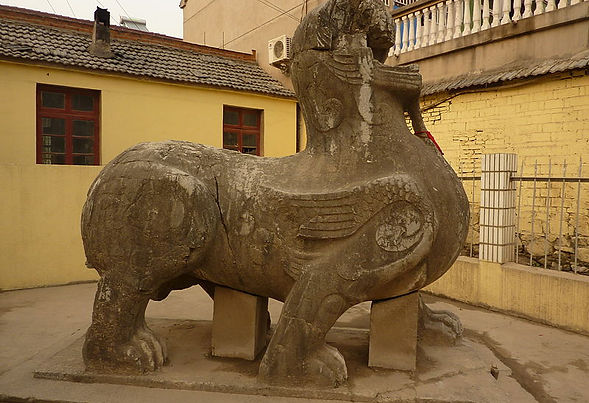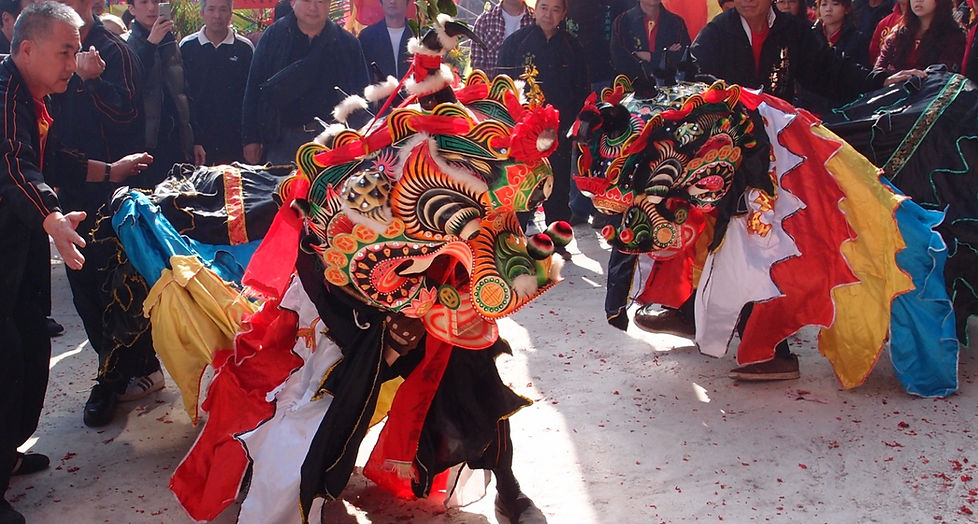QILIN
The Qilin Dance (麒麟舞) or The Hakka Unicorn Dance, also known as Chinese unicorn is one of the four sacred animals (Qilin, Dragon, Phoenix, and Turtle) in Chinese mythology. It's seen as a creature of great power and wisdom, and its appearance was a sign of good fortune. The activity has been practiced for more than 200 years. The Hakka people believe the Chinese unicorn, the qilin, is an auspicious animal that can ward off evil and bring good luck. So, on all celebratory occasions such as Chinese New Year, weddings, birthday parties, the inauguration of an ancestral hall, moving into a new home, welcoming guests, the jiao festivals, and birthdays of deities, there would invariably be a unicorn dance. Since the Hakka people brought the unicorn dance, fusing local traditional music and martial arts, with them to Hong Kong, the unicorn dance has developed its own styles and sequence of movements.
The Qilin dancing is mainly performed by moving the Qilin's head to imitate the movements of animals like cats and tigers, such as head shaking, tail wagging, and playing, mostly performed by Kung Fu school that has its origins in Hakka Kung Fu. It also integrates basic martial arts steps, and squatting, lying, bending, rising, hopping, and jumping. The use of martial arts routines symbolizes the guardian nature of the Qilin.
The culture of using the dancing Qilin for traditional folk dances and to portray the festive customs of the Hakka people has gradually permeated into the cultural life of local people, and has slowly become a characteristic part of the folk culture in the Bantian region.
This ancient depiction of a Qilin was a guardian of the tomb of the Emperor Wu of Li Song (363-422). Note that this creature has both wings and paws. It more closely resembles a central Asian griffin than a later Chinese Qilin.

The origin of the Qilin Dance is deeply rooted in Chinese folklore and cultural traditions. The Qilin itself is a mythical creature in Chinese mythology, often depicted as a benevolent creature with features resembling various animals, including the hooves of a deer, the tail of an ox, and the scales of a fish. The dance is believed to have originated in the Hakka ethnic community, which is a Han Chinese subgroup with its own distinct cultural practices. The Hakka people have a rich history and a strong sense of cultural identity, and their traditional dances, including the Qilin Dance, play a significant role in preserving and showcasing their heritage.
During the Zhou Dynasty (1046–256 BC), the Chinese unicorn was ranked the highest, with Phoenix second and the Dragon third. However, the Chinese hierarchy of mythological animals experienced changes over the centuries. By post-Qing, the qilin was ranked third, after the Dragon and Phoenix.
While there might not be a specific documented creation story for the Qilin Dance, it has evolved over time as part of the cultural practices of the Hakka people and other Chinese communities.
Overall, the Qilin Dance is a cultural expression that reflects the rich mythology, traditions, and artistic heritage of the Hakka and broader Chinese Kung Fu communities.
